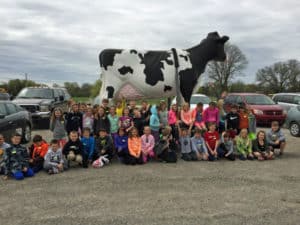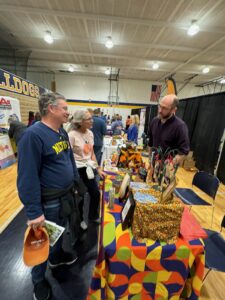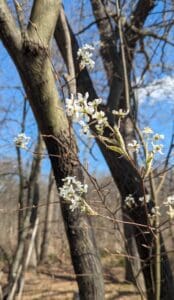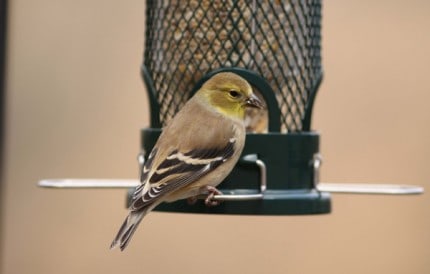
(Chelsea Update would like to thank Tom Hodgson and the Waterloo Natural History Association for the information and photos in this column.)
One of the chief pleasures of winter in Michigan is to be inside a warm house and look out at the wild birds at the feeder. You can feel generous and virtuous while staying comfy warm. And you get terrific entertainment all winter. If you’re feeding birds, you might wonder what to offer.
The two most important ingredients to most bird’s winter diet are seeds and water. Most of the birds that spend the winter are seed eaters. They have to be, as there is little else outdoors to eat.
By setting up a feeder, you are providing a generous, reliable source of food, and the birds will not be hesitant to come and help themselves. Locate the feeders where you can see them. Put several feeders at various heights. Some birds like to feed on the ground, while others prefer elevated feeders. Sparrows, juncos, doves, and cardinals readily feed on the ground. Chickadees, nuthatches, titmice, most woodpeckers, purple finches and grosbeaks prefer raised feeders.
The sunflower is the seed popular with the greatest variety of birds. The best is the black or dark oil sunflower. It is less expensive, than the gray striped, higher in energy content, and easier for the birds to crack. Another seed especially popular with finches is niger (sometimes called thistle). It is expensive, however, and niger eaters actually prefer black sunflower seeds during really cold weather because it has a higher energy content.
Safflower, a white seed slightly smaller than a black sunflower seed, is popular with cardinals, titmice, chickadees and downy woodpeckers. White millet is a favorite of sparrows, juncos and mourning doves. Avoid most so-called “wild bird mixes” as they contain a lot of filler seeds that are cheap but the birds will not eat. Most end up spoiling on the ground by the end of the season.
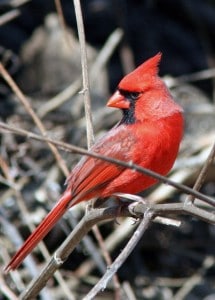
Birds whose diet includes a lot of insects during the warmer months will readily be attracted to beef suet. Pure suet containing no seeds seems to be less attractive to squirrels.
Create your own suet feeder. Cut a section branch, three or four inches in diameter. Drill one- to one-and one-half inch diameter holes through the branch. Stuff the suet into the holes. Hang vertically. This enables one to observe the normal foraging behavior woodpeckers, nuthatches, titmice and chickadees use to explore tree trunks and branches for hidden insect and spider eggs. Most grocery stores and/or meat markets package beef suet for sale. Polly’s Country Market sells it for about $1.25 per pound.
It is not necessary to go out of town for bird feeding supplies. Many local retailers including Family Farm and Home, Ace Hardware, McCalla Feed, and Farmers Supply carry feeding equipment and seed.
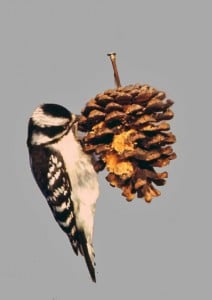
The meat department at Polly’s Country Market carries raw beef suet.
Water is very important for wintering birds. A bird bath filled with fresh water daily will be very popular with your feathered feeder friends. You can buy bird bath heaters to keep the water from freezing. Contrary to popular belief, bird’s feet will not freeze to metal perches on bird feeders or bird baths. Neither do our fingers. Just don’t put your tongue on metal objects outside in the winter.
Birds are apparently smarter than some humans, for I have never found a bird with its tongue stuck to a metal object in the winter.
And what about those pesky squirrels, they can monopolize a bird feeder while keeping the birds at bay. There are squirrel-proof feeders available. Or you can buy a sack of shelled corn and spread it on the ground well away from the feeders. This will keep the squirrels occupied thus lessoning the chance of them bothering the bird feeders. Shelled corn is really inexpensive, and a 50-pound bag will probably last all winter.
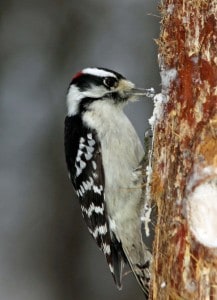
Sometimes people are concerned whether feeding birds is helpful or harmful. Many ask, “should I feed the birds if I will be gone part of the winter?” Feeding does concentrate birds in one place, which makes them more vulnerable to predators and disease, but the extra food may also enable some birds to survive that otherwise would not.
Birds often make the rounds of all the feeders in the neighborhood in a day’s time. If one of the feeders is empty for a few days or weeks because the owners have gone on vacation, they quickly move to those that are still being maintained.
The positives and negatives of feeding birds probably cancel each other out. Yes, the birds will probably do fine without our help, but if we don’t feed them, we won’t be able to enjoy watching them. So feed and enjoy.
Next week, more about some of the more common local birds attracted to backyard feeders.









